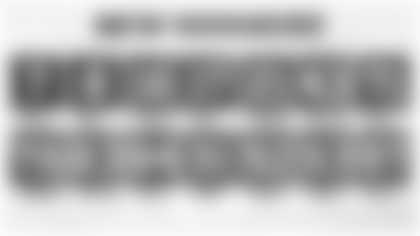This is the latest in a series of NFL Combine, unrestricted free agency and predraft reports that Real Football Services is filing for newyorkjets.com.
So now it is done. The Eagles have rid themselves of Donovan McNabb's 92-49-1 record as a starter, his 9-7 playoff record (which includes five NFC Championship Games and a Super Bowl appearance), and his six Pro Bowl seasons. And their fans can boo their former QB all the way back to the nation's capital every time he throws a touchdown against them in that heated Philadelphia-Washington rivalry in the NFC East.
The question now is: What does this do to the picture at the top of the 2010 NFL Draft?
The Redskins have seemingly addressed their immediate concerns at quarterback with the addition of McNabb and veteran free agent Rex Grossman (one would expect Jason Campbell's bags are already packed), taking them out of the Sam Bradford-Jimmy Clausen mix.
As a result, all of the pundits have declared this the final chapter in the "Bradford to the Rams" story, assuming it is a foregone conclusion that the Sooners signalcaller will be making his way to St. Louis.
But here's another question. What if he's not? What if the Rams take a good look at this situation and decide it's not worth the risk?
We will be mocked for such a thought, no doubt. But stop thinking like a fan for a moment. Based on last year's deal for Lions QB Matthew Stafford, the Rams are going to have to pay somewhere in the area of $43 million to $45 million, including about $20M in guaranteed money, to get Bradford signed as the No. 1 overall pick.
When you slip into your GM shoes, are you willing to pay that kind of money for a guy who hasn't gotten up from the last two big hits he took in college?
Of course the pro day went great, as we expected it would. In shorts, throwing to his own receivers, without a defense, in a workout scripted by him and his handlers, Bradford displayed the arm strength and accuracy that he is known for. So the shoulder seems fine, and that's good news for Bradford and whatever team selects him.
But there are other question marks. He has struggled to feel backside pressure and read the blitz, he is not particularly elusive in the pocket, and he does not protect himself well from contact. He also didn't show the same quiet feet he once had in the pocket after returning from the initial injury (not that we blame him). So until he gets up from a hit, durability is going to be an issue that continues to dog him.
He also played predominantly in a spread offense at Oklahoma (much like the recently maligned Tim Tebow at Florida), where he mostly hit his primary read or hit the quick screen pass when in trouble. Making full-field reads of coverages, picking up zone dogs and linebacker drops, and determining safety movement postsnap while dropping from center are clearly going to be big adjustments for him, which will take time.
Now readers should be sure not to take all this the wrong way. We, like most scouts, believe that Bradford is a very good player and the best quarterback in this draft. In addition to his arm, he displays great intangibles — he's hardworking and smart, makes good decisions with the ball, is a natural leader, and given the chance he could develop into a franchise NFL quarterback. Some have compared him to Eli Manning, and we don't disagree.
But it will take time, and that is where our problem with the Bradford-to-St. Louis saga really lies. With the Rams, Bradford won't get the time or protection he needs to develop into that player.
If St. Louis, a team with a new owner and a need to sell tickets, makes Bradford the first overall pick, it will be with the intention of making him the starter on opening day. But he will do so without much help. The Rams' offensive line allowed 40 or more sacks in each of the past 10 years, including 137 over the past three seasons. Alex Barron, a converted RT, is playing on the left side but lacks the mechanics, footwork, lower-body strength and discipline to excel in that spot (at least to this point).
RT Jason Smith, last year's No. 1 pick, has played just eight games and started only five due to concussion issues, and despite excellent athleticism is still developing as a player. Guard Adam Goldberg is a liability in pass protection on the interior. Consider that Rams QBs Marc Bulger, Kyle Boller and Keith Null missed all or part of a combined 12 games due to injury last year and you see where selecting a QB with durability issues could be a concern.
A look at Bradford's receiving targets may give you more pause. Starting WRs Donnie Avery (47 catches for 589 yards in 2009) and Keenan Burton (25 catches for just a 10.1 average per catch) trailed RB Steven Jackson (51 catches for a 6.3 yard average per catch) as the team's top receiver!
But they have Jackson, say our critics. He led the NFC with over 1,400 rushing yards last season while playing on a very bad team. Take a look at Mark Sanchez, Joe Flacco and Matt Ryan. They all had the support of a strong running game in their rookie seasons and had success. That's all true.
But Jackson has missed nine games and 10 starts over the past three seasons and had just one game of 90-plus yards over the last six weeks of the 2009 season. In that same stretch, he averaged 4.0 yards per carry just twice.
What Sanchez, Flacco and Ryan also had was a defense, a luxury Bradford would not immediately be afforded in St. Louis. The Rams gave up 27.2 points per game in 2009, second-worst in the NFL. What that means is they will be playing from behind much of the time, which means more passing, which means less Jackson and more opportunities for opposing defenses to test Bradford's durability.
Despite all that, maybe Bradford is the guy. We're never afraid to admit when we're wrong. But if we are, why has there been so little discussion about him going anywhere but St. Louis? If Bradford is a sure-fire franchise QB:
* Why did the Seattle Seahawks, who have two first-round picks and plenty of ammunition to move up to No. 1, trade for Charlie Whitehurst, a QB who has not attempted a pass in five NFL seasons?
* Why did the Browns acquire Jake Delhomme, a guy who lost his starting job to Matt Moore in Carolina, instead of considering a move for Bradford? Why did the Raiders push so hard for Donovan McNabb?
* Why haven't the 49ers, another team with QB issues (despite their claim that they are set at QB) and multiple first-round picks, made a move for Bradford?
* Why did the Redskins, the one team most people thought had an interest and a shot at Bradford, instead trade away picks for McNabb?
There are some obvious answers to these questions. The chance to obtain a proven Pro Bowl QB over an unproven draft choice is a no-brainer. The Raiders have been severely burned by putting their faith in a No. 1 QB (JaMarcus Russell). The Browns could still be in the mix for a young signalcaller that they could develop over a season or two. And any one of these teams could still make a draft-day deal to move up.
But in the NFL, where there's smoke, there's fire ... and there's been very little, if any, smoke.
But that takes us back to our original question. What if the Rams consider all of this and decide to pass on Bradford? Where does he go? Detroit and Tampa are set at QB. Kansas City is likely to stick with Matt Cassel for the foreseeable future. As mentioned above, Washington, Seattle, Cleveland and Oakland could all still select him, and Buffalo is in need of a QB as well. But all those teams have other pressing needs that have to be addressed as well, and only a few offer a situation that is much different than the one in St. Louis.
And if Bradford falls to the bottom of the top 10, what does that mean for Clausen? San Francisco and Seattle (Pete Carroll recruited Clausen while at Southern Cal) could get another shot at him in the middle of Round 1. Maybe even Tennessee could get in the mix. But teams like the Giants, Steelers, Falcons, Texans, Bengals, Packers and Eagles are set at QB.
Which means Clausen could slide to the bottom of the round, or maybe further.













